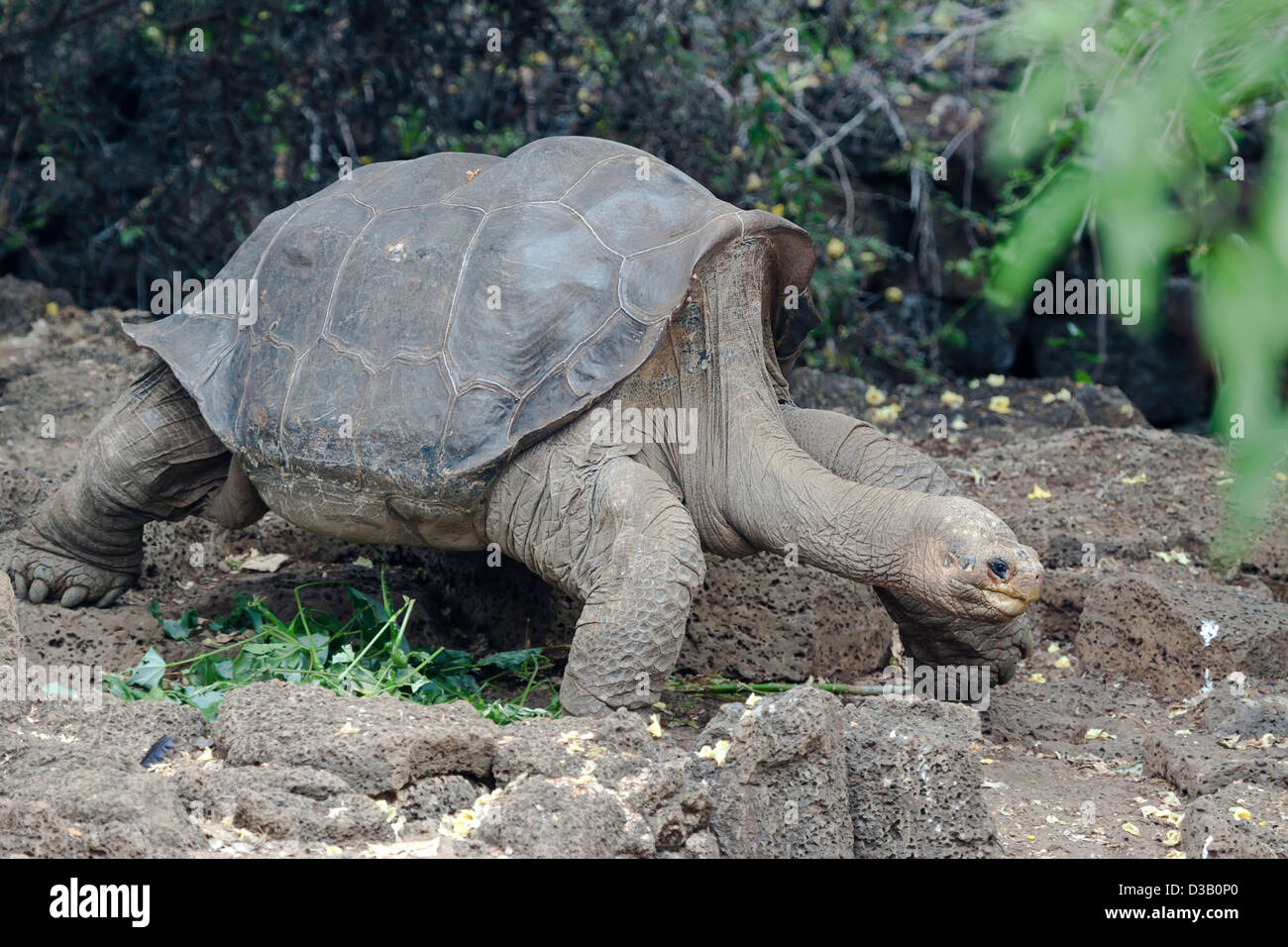
Some synonyms of Chelonoidis nigra abingdonii are: Testudo abingdonii Günther, 1877 Testudo elephantopus abingdonii – Mertens & Wermuth, 1955 Geochelone elephantopus abingdoni – Pritchard, 1967 Geochelone nigra abingdoni – Iverson, 1992 Geochelone abingdoni – Valverde, 2004. In 1876 Commander William Cookson brought three male specimens (along with other subspecies of Galápagos tortoise) to London aboard the Royal Navy ship HMS Peterel. The knowledge of its existence was derived from short statements of the voyages of Captain James Colnett in 1798 and Basil Hall in 1822.

The name, abingdonii, derives from Abingdon Island, now more commonly known as Pinta Island. This subspecies was originally described in 1877 by German-born British herpetologist Albert Günther, who named it Testudo abingdonii, a new species, in his book The Gigantic Land-tortoises (Living and Extinct) in the Collection of the British Museum. As these specimens are juveniles, their parents may still be alive. However, 17 first-generation hybrids have been found at Wolf Volcano on Isabela Island during a recent trip by Yale University researchers. Lonesome George died on 24 June 2012 and the subspecies were believed to have become extinct with the death of Lonesome George. Efforts were made to mate the male, named Lonesome George, with other subspecies, but no viable eggs were produced. By the mid-20th century, it was assumed that the subspecies was extinct until a single male was discovered on the island in 1971. By the end of the 19th century, most of the Pinta Island tortoises had been wiped out due to hunting. The subspecies was described by Albert Günther in 1877 after specimens arrived in London.


 0 kommentar(er)
0 kommentar(er)
